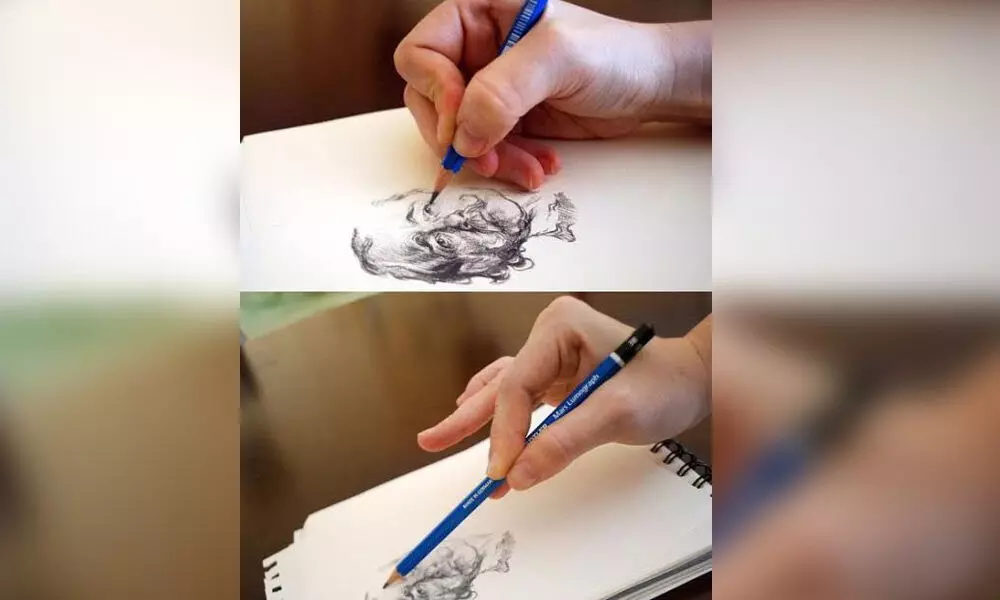Live
- Over 7,600 Syrians return from Turkiye in five days after Assad's downfall: minister
- Delhi BJP leaders stay overnight in 1,194 slum clusters
- Keerthy Suresh and Anthony Thattil Tie the Knot in a Christian Ceremony
- AAP, BJP making false promises to slum dwellers for votes: Delhi Congress
- 'Vere Level Office' Review: A Refreshing Take on Corporate Life with Humor and Heart
- Libya's oil company declares force majeure at key refinery following clashes
- Illegal Rohingyas: BJP seeks Assembly session to implement NRC in Delhi
- Philippines orders full evacuation amid possible volcanic re-eruption
- Government Prioritizes Welfare of the Poor, says Dola Sri Bala Veeranjaneyaswamy
- Two Russian oil tankers with 29 on board damaged due to bad weather
Just In

Learn sketching in simple ways
Since the time that everyone has locked up in their houses, even their favorite things which they ever did during free hours now seemed boring
Since the time that everyone has locked up in their houses, even their favorite things which they ever did during free hours now seemed boring. Finding it an opportunity, while few are getting back to their skills, few are interested but with lack of skills are left with no other option to leave it.
Is lack of sketching tips holding you back from embarking on your sketching journey? Here are a few tips for you, if you now wish to learn sketching.
Know your pencils
There's a big difference between 4B and 4H
Having the right pencil for your sketch is essential. The hardness of the graphite is indicated on the side of the pencil: 'B' pencils are softer, 'H' are harder, and 'HB' sits in the middle – there's a big difference between a 4H and a 4B.
Take control of your pencil
If you position your hand closer to the end of the pencil, you have more control and precision, but heavier strokes (darker markings)Gripping further up the pencil will give you less control and precision, but lighter strokes (lighter markings).
Try different mark-making methods
There are plenty of sketching techniques to help you achieve different styles and effects. Above are some examples demonstrating different ways to create form and depth. It's important to experiment and find what works best for you, to not only complement but enhance your style.
Avoid smudging
Use an extra piece of paper under your hand to avoid smudging your work
When shading, use an extra piece of paper underneath your hand. This will minimise the amount your hand smudges your pencil lines. If you're right-handed, start shading from left to right; if you're left-handed, start at the right and move to the left.There's nothing more frustrating than trying to make a clean-looking drawing that loses its brilliance and value thanks to smudging. Instead, use smudging to your advantage every now and then to smooth out shading. You can do this with several tools.
Control your edges
Create interest by combining different types of edges. A thin and hard edges give objects solid borders. Lost edges occur when the object and background values start to blend together, so the edge is implied rather than defined. Undefined edges need to be deciphered by the viewer themselves.
Use a blending stick for smooth shading
Create subtle shading by smudging large areas of soft charcoal. It is possible to create smooth, blended effects using pencils.Sometimes it's preferable for your shading to be less sketchy and more smooth and subtle. Pencil lines don't blend perfectly unless you're very careful.Use spare paper to doodle a big swatch of soft graphite or charcoal pencil, then use a large blending stick to pick up the soft dust to use for your image.
Make it symmetrical (but not quite)
Keep a nice contrast going between a finished look and a more of a sketchy feel. A good way to prevent this is to add some subtle changes and only keep the general lines symmetrical instead of mirroring every small part. Keeping some elements asymmetrical helps to avoid boring repetition.
Differentiate different textures
To show different textures within your sketch, you need to adjust your technique. You wouldn't want to shade skin the same way you shade metallics or fur. They each have unique properties and capturing that will elevate your drawings because of the accuracy depicted.

© 2024 Hyderabad Media House Limited/The Hans India. All rights reserved. Powered by hocalwire.com







